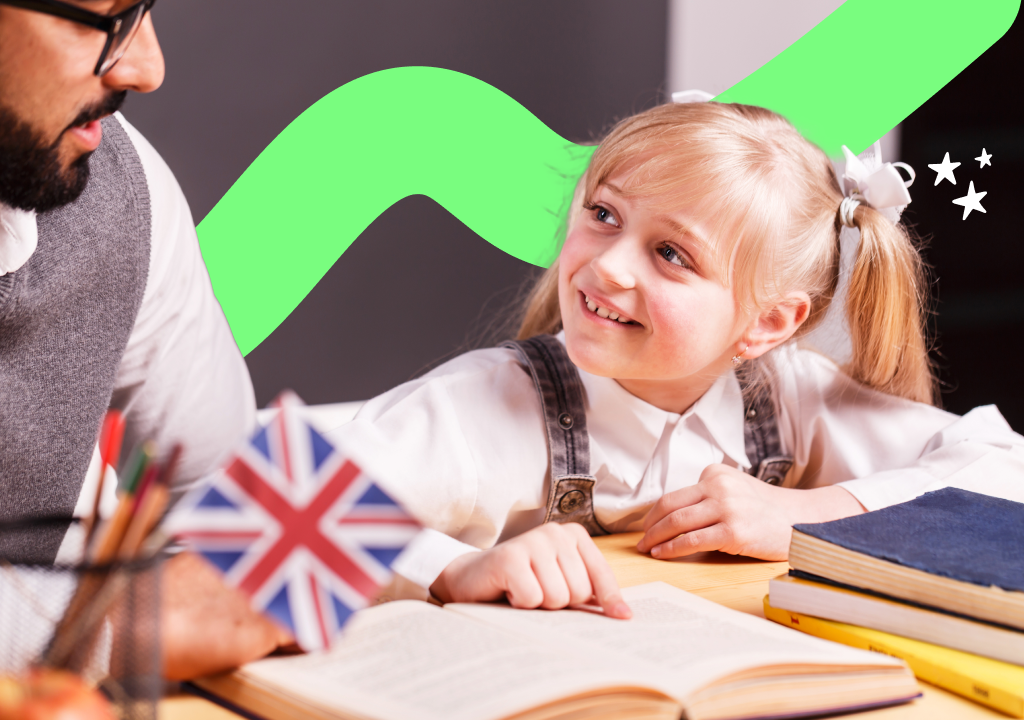Mindfulness Exercises for ESL Students to Reduce Language Anxiety
- Mindfulness reduces language anxiety: Simple practices like deep breathing, grounding, and positive affirmations help ESL learners feel calmer, more focused, and confident.
- Adapt activities for age and level: Mindfulness exercises should match the student’s age and proficiency; playful movement for young kids and middle schoolers, to journaling and guided meditations for teens and adults.
- Daily practices make a difference: Even quick exercises, whether at home, online, or in class, can build confidence, improve focus, and make learning English less stressful.
Imagine standing up to speak English in class, and your heart races, your palms sweat, and your mind goes blank. This overwhelming feeling, known as language anxiety, is something many ESL students experience when trying to communicate in a new language. It can hold them back from participating, expressing their ideas, and building confidence in their English.
One way to help students manage these emotions is through mindfulness, a practice that encourages being present, calming the mind, and focusing on the moment. Mindfulness can reduce stress, improve concentration, and create a sense of safety in the classroom. When students feel calm and supported, they’re more likely to enjoy learning.
At Novakid, we understand how language anxiety can be, and we want to help. That’s why we’ve put together this article, filled with mindfulness exercises designed especially for ESL students. These quick mindfulness activities can help teachers lower stress levels, increase focus, and make language learning a more positive experience for everyone.

What Is Mindfulness and Why Use It in ESL?
Mindfulness is the practice of paying attention to the present moment without judgment. In the classroom, mindfulness and teaching go hand in hand; when students learn to pause, breathe, and focus, they become more open to learning. Simple techniques, such as deep breathing or brief body scans, are quick mindfulness activities that can help calm racing thoughts and improve concentration.
For ESL learners, language anxiety can make students feel nervous, distracted, or even afraid to speak. By using mindfulness activities for students, teachers can help reduce this stress and create a safer space where students feel more confident trying new words and speaking in front of others.
Luckily, adding mindfulness for students into daily life doesn’t have to be complicated. Even a few minutes a day can make a big difference in lowering anxiety and building the positive mindset needed to succeed in learning a new language.
What Are the Best Mindfulness Exercises for Anxiety?
When students feel anxious, their breathing becomes shallow, their thoughts race, and their focus slips away. Mindfulness exercises for anxiety can slow down this cycle and ground attention in the present moment, helping students feel more in control, which reduces fear and stress. When learning a new language, it’s likely that this anxiety will increase and can make students afraid to speak or unable to focus on what they want to say.
To avoid this, or keep the stress levels down to a reasonable level, consider these five different mindfulness practices that support ESL students:
Breathing Focus
- Sit comfortably.
- Inhale slowly and count to five.
- Exhale slowly and count to five.
- Repeat this for five breaths before speaking.
Body Scan
- Close your eyes and take one deep breath.
- Slowly move your attention from your head down to your toes.
- Notice and relax any tense areas before a presentation or speaking task.
Mindful Listening
- Pair students up.
- One student speaks while the other listens quietly.
- The listener focuses only on the sounds and words, without judging or thinking about their reply.
Grounding Exercise
- Have students pause and look around.
- Name five things they can see, four things they can hear, and three things they can feel.
- This brings their mind back to the present when they feel nervous.
Positive Affirmation
- Before using English, have students repeat a short phrase like:
-“I can do this.”
-“I am learning every day.”
- This helps build confidence and replaces anxious thoughts with positive ones.
Other Effective Daily Mindfulness Practices for Students
In addition to the five techniques shared above, students can try other daily mindfulness practices that fit easily into their everyday routines. Plus, these activities don’t need to happen only in the classroom! Students can do them at home, before or after lessons, or even between online classes. Not only will you become more mindful when learning a new language, but you will also be more mindful in your everyday life.
Morning Breathing Ritual: Spend one quiet minute focusing on slow, deep breaths before starting the day or a lesson. This helps clear the mind, lower stress, and boost focus before learning begins.
Journaling One Positive Thought in English: After class, write down one positive thought or a small success from the day in English. This builds self-confidence and helps see progress.
Visualization: Close your eyes and imagine yourself calm and confident while speaking English. Visualizing success can boost confidence and reduce nervousness before lessons or presentations.
Stretch and Breathe Break: Stand up, stretch your arms and back, and take several deep breaths. This break refreshes the body and mind, helping you feel alert and more relaxed.
Gratitude List: Each evening, list three things to be thankful for in English. This simple routine shifts your mindset from stress to positivity, reducing language anxiety.
Mindfulness Activities for Different Ages
Before just jumping right into mindfulness, ask yourself a few questions: “What is the language level of the student?” “How old are they?” “What is their learning style?”
English learners of different ages and proficiency levels experience language anxiety in different ways. Novakid recognizes that what makes a middle schooler nervous might be very different from what stresses out a teen or adult, so mindfulness activities should reflect these differences.
For young kids: Keep activities short, simple, and playful, like blowing bubbles to practice deep breaths, gentle stretches, or listening to calming sounds. These help kids stay relaxed and feel safe while practicing English.
For middle school ESL learners: Use movement-based and playful activities to keep students engaged, such as breathing while tracing hands, mindful coloring with English words, or stretches between lessons.
For teens and adults: Try a mindfulness activity that encourages reflection and self-awareness, such as journaling, repeating positive affirmations, or guided meditations.
See? Feeling nervous about speaking English is totally normal, but mindfulness exercises for students can help! The trick is to pick activities that fit your age and level. Little daily practices can go a long way in helping kids, teens, and adults enjoy learning English without stress.
Want to try it out? Book a trial lesson with Novakid and practice English while learning fun mindfulness techniques online. It’s a great way to stay calm, confident, and excited about learning!





































